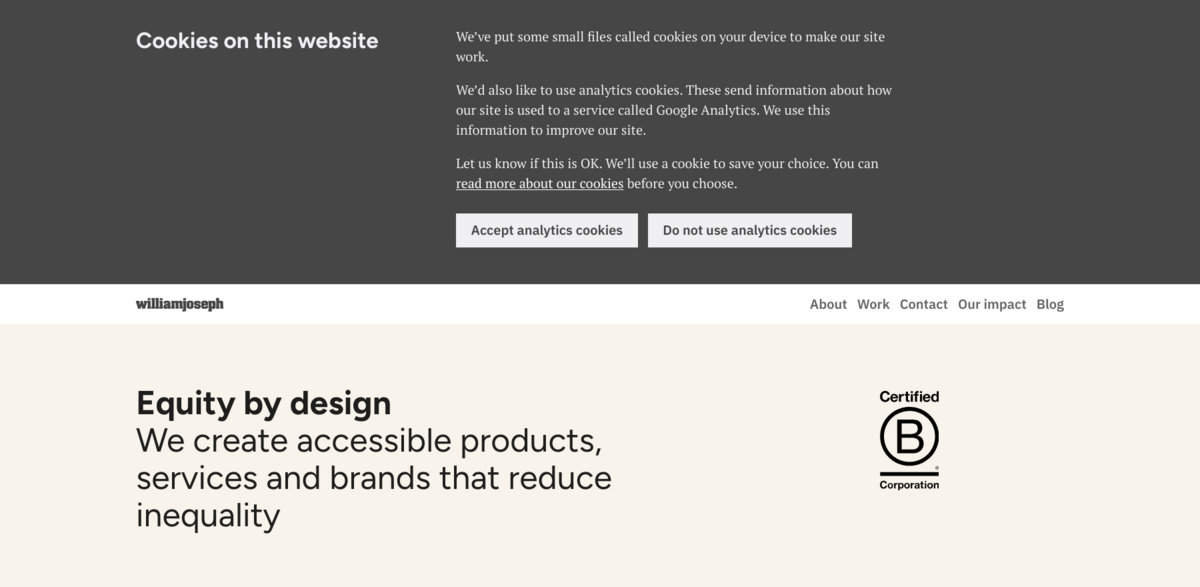What is Equity by Design?
Equity by Design is all about creating accessible products, services, and brands that actively reduce inequality. It’s a project rooted in the belief that design isn’t just about aesthetics—it’s a powerful tool to make the world fairer and more inclusive. From digital platforms to brand identities, the focus is on user-centred approaches that ensure everyone, regardless of background or ability, can engage meaningfully. The work spans a wide range of sectors, including charities, education, healthcare, and community development, all tied together by a commitment to equity and accessibility.
Main Benefits of the Project
Here’s a quick snapshot of what Equity by Design brings to the table:
- Boosted engagement by 62% for Autistica, the UK’s leading autism research charity
- Recruited 140,000 volunteers for the NHS-Galleri early cancer detection trial
- Supported families and professionals to get children reading through BookTrust
- Enhanced digital accessibility for Great Ormond Street Hospital Charity, one of the UK’s most beloved charities
- Developed user experiences that help young people report sexualised images for NSPCC
- Created a world-leading digital clinical trial system for NHS-Galleri Trial
- Designed diagnosis information for Cancer Research UK that actually works
Diverse Range of Projects
The scope of Equity by Design’s work is impressively broad. It includes transforming the Legal Education Foundation for a more equitable future, helping patients feel confident through clearer branding at Communitas Clinics, and supporting musicians to thrive with Help Musicians. The project also dives into academic research, like King’s College London’s studies on exercise’s effect on the brain and substance misuse programmes. Not to mention, it’s involved in community-building efforts such as Locality’s resource development and Trees for Cities’ mission growth. Each initiative is tailored to meet specific needs but united by a user-centred, inclusive design philosophy.
Innovative Digital Solutions
Digital design and service design are at the heart of Equity by Design’s approach. Whether it’s creating an accessible website for Moorfields Eye Charity, developing a digital presence for the LESS CO2 sustainable schools programme, or launching King’s Digital Lab to explore academic research in new ways, innovation is key. The project also embraces data visualisation, like the work done for the RSA Inclusive Growth Commission, and mobile solutions such as Train Timer’s at-a-glance rail information for Apple devices. These digital tools don’t just look good—they’re built to be functional, accessible, and user-friendly.
Championing Equity and User Research
Equity by Design places a strong emphasis on user research and user testing to ensure that every product or service truly meets the needs of its audience. This means listening closely to users, understanding their challenges, and iterating designs based on real feedback. The approach is deeply collaborative, often involving stakeholders from charities, academic institutions, and community groups. The result? Designs that are not only beautiful but also genuinely useful and equitable. It’s about putting people first—always.
Project Impact and Sustainable Development Goals (SDGs)
- SDG 3: Good Health and Well-being – through projects like NHS-Galleri Trial and Alzheimer’s Research UK
- SDG 4: Quality Education – supporting initiatives like BookTrust and Legal Education Foundation
- SDG 10: Reduced Inequalities – central to the mission of Equity by Design
- SDG 11: Sustainable Cities and Communities – via Locality and Trees for Cities
- SDG 17: Partnerships for the Goals – collaborating with charities, academic institutions, and community organisations
Looking Ahead: The Future of Inclusive Design
Equity by Design is more than a project—it’s a movement towards a fairer, more accessible world. The ongoing challenge is to keep pushing boundaries, embracing new technologies, and deepening user engagement. As digital landscapes evolve, so too does the opportunity to create services and brands that truly serve everyone. The focus on equity, user-centred design, and meaningful collaboration ensures that this work will continue to make a real difference—one accessible product, one inclusive service, one empowered community at a time.





















